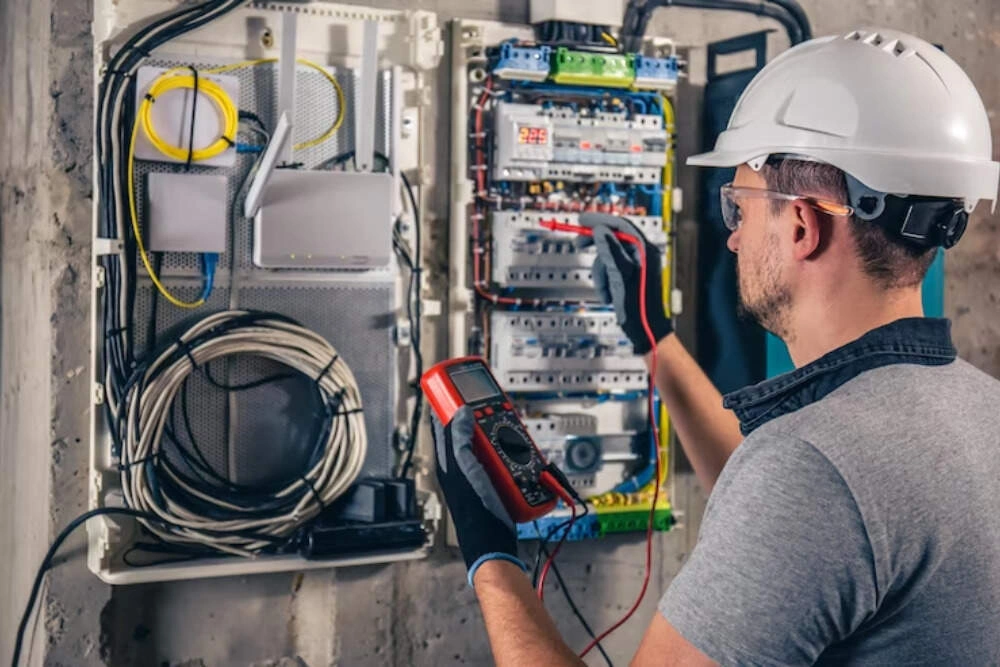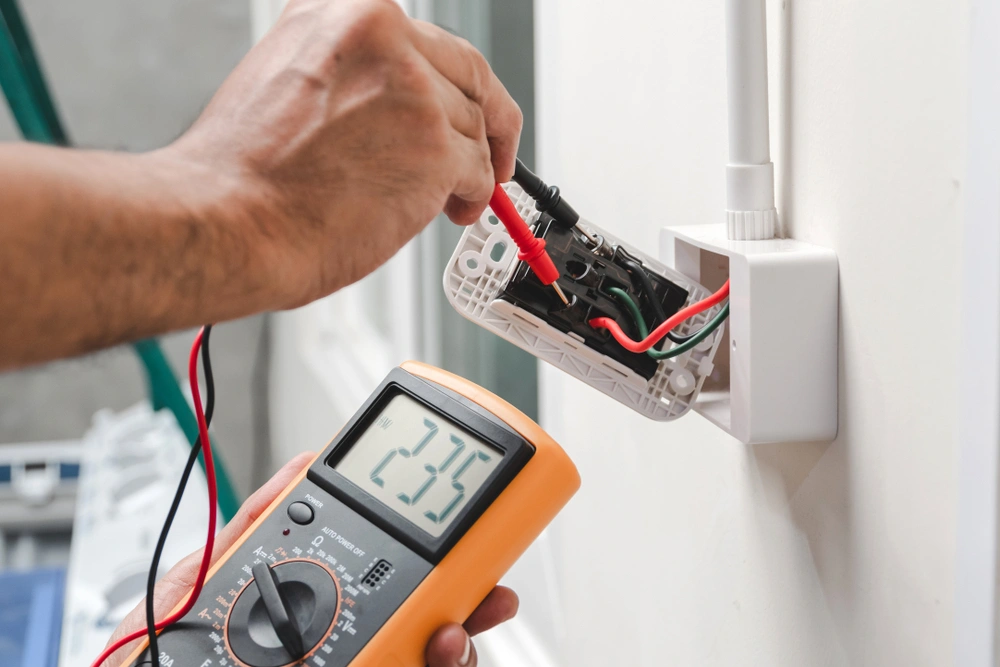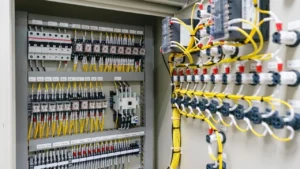If you’re a landlord, property owner, or letting agent in London, you’ve likely encountered terms like EICR and Electrical Installation Certificate. While both documents are essential for electrical safety and compliance, they serve distinctly different purposes—and understanding the difference between EICR and Electrical Installation Certificate is crucial for staying legally compliant and keeping your property safe.
Many property professionals confuse these two certificates, leading to compliance issues, delayed lettings, and potential safety risks. This comprehensive guide explains exactly when you need an EICR vs Electrical Installation Certificate, what each document covers, and how they work together to protect your property and tenants.
What is an EICR (Electrical Installation Condition Report)?
An EICR, or Electrical Installation Condition Report, is a detailed assessment of the current condition and safety of your property’s existing electrical systems. Think of it as a comprehensive health check for your electrical installations—it doesn’t certify new work, but rather evaluates everything that’s already installed.
During an EICR inspection in London, a qualified electrician examines all accessible electrical circuits, wiring, sockets, switches, consumer units (fuse boxes), and fixed electrical installations throughout your property. The inspection tests for potential hazards including damaged wiring, overloaded circuits, outdated installations, inadequate earthing and bonding, and any electrical work that doesn’t comply with current BS 7671 wiring regulations.
What’s Included in an EICR Certificate?
An EICR certificate London report provides a complete breakdown of your property’s electrical safety status, including:
- Visual inspection of all electrical installations and equipment
- Dead and live testing of circuits and protective devices
- Assessment of earthing and bonding arrangements
- Verification that installations meet current safety standards
- Identification of non-compliances or potential dangers
- Condition codes indicating severity of any issues found
The report uses a coding system to categorize findings:
C1 (Danger Present) – Immediate risk requiring urgent attention
C2 (Potentially Dangerous) – Urgent remedial action required
C3 (Improvement Recommended) – Non-urgent improvements advised
FI (Further Investigation) – Additional inspection needed
If your property passes the inspection without C1 or C2 codes, you’ll receive a satisfactory EICR certificate valid for five years. If issues are identified, remedial work must be completed before a satisfactory certificate can be issued.
When Do You Need an EICR?
Under the Electrical Safety Standards in the Private Rented Sector (England) Regulations 2020, landlords must obtain an EICR certificate before letting a property and renew it every five years thereafter. This landlord electrical safety certificate is now a legal requirement across England, including all London boroughs.
You also need an EICR when:
- Purchasing a property (recommended during surveys)
- Selling a property (increasingly requested by buyers)
- After tenant changeover (best practice)
- If electrical issues or concerns arise
- For insurance purposes (many insurers now require valid EICRs)
- When requested by local authorities
For landlords managing rental properties across Greater London, maintaining current EICR certificates is non-negotiable. Failure to comply can result in fines up to £30,000, prohibition orders preventing you from letting the property, and serious consequences if electrical faults cause injury or death.
What is an Electrical Installation Certificate (EIC)?
An Electrical Installation Certificate (EIC) is fundamentally different from an EICR. Rather than inspecting existing installations, an EIC is issued after new electrical work has been completed. It certifies that brand-new installations, alterations, or additions to your electrical system have been designed, installed, inspected, and tested according to BS 7671:2018+A2:2022 standards.
When a qualified electrician completes new electrical work—whether it’s rewiring a property, installing a new consumer unit, adding circuits, or undertaking major electrical alterations—they must issue an Electrical Installation Certificate to confirm the work is safe and compliant.
What’s Included in an Electrical Installation Certificate?
An EIC certificate for landlords provides detailed documentation of new electrical work, including:
- Description of the installation work completed
- Design and construction details of new circuits
- Inspection and test results for new installations
- Verification that work complies with BS 7671 standards
- Confirmation of materials and equipment used
- Details of protective devices and earthing arrangements
- Schedule of circuit details and test results
The certificate must be signed by the qualified electrician who designed, installed, and tested the work. It serves as legal proof that the electrical installation was completed safely and to regulation standards.
When Do You Need an Electrical Installation Certificate?
You need an Electrical Installation Certificate London whenever significant new electrical work is carried out, including:
- Complete property rewiring
- Installation of new consumer units (fuse boxes)
- Addition of new electrical circuits
- Major alterations to existing electrical systems
- Installation of new electrical systems in extensions or conversions
- Any notifiable electrical work under Building Regulations Part P
For landlords renovating properties or undertaking electrical upgrades, the EIC provides essential documentation that the work was completed safely. Many mortgage lenders and property insurers require an EIC following major electrical works before they’ll provide coverage.
It’s worth noting that minor electrical work—such as replacing a like-for-like socket or light fitting—doesn’t typically require an EIC. However, any work involving new circuits, consumer units, or installations in special locations (like bathrooms) must be certified.
EICR vs Electrical Installation Certificate: The Key Differences
Understanding which electrical certificate do landlords need in the UK becomes clearer when you compare these documents side by side:
Purpose
EICR: Assesses the condition and safety of existing electrical installations
EIC: Certifies that new electrical work has been completed safely
When It’s Required
EICR: Every 5 years for rental properties, property sales, safety checks
EIC: Immediately after new electrical installations or major alterations
What It Covers
EICR: All existing electrical systems, wiring, and installations throughout the property
EIC: Only the specific new work that has just been completed
Who Needs It
EICR: Landlords, property owners, buyers, sellers
EIC: Anyone commissioning new electrical work—landlords, homeowners, builders, developers
Validity Period
EICR: 5 years for rental properties (can be shorter for commercial)
EIC: Permanent record of installation work (but property still needs periodic EICRs)
Pass/Fail Status
EICR: Can be satisfactory or unsatisfactory based on condition codes
EIC: Certifies work meets standards at time of installation (no pass/fail)
Legal Requirement for Landlords
EICR: Yes—mandatory under 2020 regulations
EIC: Only when new electrical work is carried out
The simplest way to remember the difference: an EICR checks what’s already there, while an EIC certifies what’s just been installed.
When Do You Need Each Certificate?
The answer to “when do you need an EICR vs EIC certificate” depends on your specific situation and what’s happening with your property’s electrical systems.
Scenarios Requiring an EICR
You’re a landlord letting a property – You must provide tenants with a valid electrical safety certificate UK (EICR) before they move in and renew it every five years. This applies whether you’re letting a single flat in Shoreditch or managing a portfolio across the M25 area.
You’re buying or selling a property – While not legally required for sales, mortgage lenders and buyers increasingly request EICRs during the conveyancing process. A current EICR can speed up sales and provide peace of mind to buyers.
Your property is over 25 years old – Electrical installations deteriorate over time. Properties with aging electrical systems benefit from regular EICR inspections to identify developing issues before they become dangerous.
You’ve noticed electrical problems – Flickering lights, tripping circuit breakers, burning smells, or damaged sockets warrant an immediate EICR inspection to identify and address safety hazards.
Your insurance requires it – Many landlord insurance policies now mandate valid EICR certificates as a condition of coverage.
Scenarios Requiring an Electrical Installation Certificate
You’re completely rewiring a property – Full rewires require an EIC upon completion to certify all new electrical installations meet current standards.
You’re adding a new circuit or consumer unit – Installing additional circuits, upgrading fuse boxes to modern consumer units, or adding electrical systems requires certification.
You’re renovating or extending – Extensions, loft conversions, and basement conversions involving new electrical installations need an EIC for the new work.
You’re upgrading electrical systems – Replacing outdated electrical panels, installing new lighting circuits, or adding electric vehicle charging points requires professional certification.
Building regulations require it – Any notifiable electrical work under Part P of the Building Regulations must be certified with an EIC or registered through a competent person scheme.
When You Need Both Certificates
Many property projects require both an EICR and an Electrical Installation Certificate at different stages:
Renovation projects – Before starting major renovations, an EICR identifies the condition of existing installations. After rewiring or electrical upgrades, an EIC certifies the new work. Once complete, future periodic EICRs maintain safety compliance.
Property purchases – Buyers often commission an EICR during surveys to assess existing electrical safety. If the EICR identifies issues requiring remedial work, the electrician issues an EIC after completing repairs or upgrades.
Rental property compliance – When taking on a new rental property, you need an EICR to ensure existing installations are safe. If the inspection reveals outdated or dangerous electrical work requiring replacement, you’ll receive an EIC for the remedial installations, followed by a satisfactory EICR once all work is complete.
How EICR and EIC Work Together for Complete Compliance
For landlords managing properties across London and Greater London, both certificates play complementary roles in maintaining electrical safety and legal compliance.
An Electrical Installation Certificate provides a permanent record that specific electrical work was completed safely and to standard. However, it doesn’t exempt you from periodic EICR requirements. Even if you have an EIC for rewiring work completed just two years ago, you still need a current EICR to let the property legally.
Think of it this way: the EIC confirms the electrician installed new systems correctly, while the EICR verifies those systems (along with everything else) remain safe and compliant over time. Electrical installations deteriorate, circumstances change, and regulations evolve—regular EICR inspections ensure your property stays safe and compliant regardless of when the last work was done.
Best Practices for Electrical Compliance
Maintain organized records – Keep all EICRs and EICs in a property file. Tenants, letting agents, insurers, and local authorities may request these documents at any time.
Schedule inspections proactively – Don’t wait until your EICR expires. Book renewals 4-6 weeks before expiry to avoid compliance gaps that could delay lettings or leave you exposed to penalties.
Address issues promptly – If an EICR identifies C1 or C2 issues, arrange remedial work immediately. Delaying repairs increases liability and prolongs non-compliance.
Use qualified electricians – Only NICEIC, NAPIT, or ELECSA registered electricians should conduct EICRs and issue EICs. Their work is recognized by insurers, local authorities, and courts.
Consider additional services – Combine your EICR inspection with other landlord safety certificates like Gas Safety Certificates and Fire Risk Assessments to streamline compliance and reduce disruption to tenants.
At Landlord Certification, we provide both EICR certificates London and Electrical Installation Certificates across all London boroughs, helping landlords maintain complete electrical compliance efficiently. Our NICEIC approved electricians deliver certificates within 24 hours, with same-day inspections available when you need them most.
Common Questions About EICR vs Electrical Installation Certificate
Can an Electrical Installation Certificate replace an EICR for rental compliance?
No. While an EIC certifies that new electrical work was completed safely, landlords must still provide a current EICR every five years under the 2020 regulations. The EIC covers only specific new installations, whereas an EICR assesses the entire property’s electrical safety.
Do I need both certificates if I’ve just rewired my rental property?
Yes. Your electrician will issue an EIC upon completing the rewiring work. However, you’ll also need an EICR before letting the property to comply with landlord regulations. Many electricians can issue both documents—the EIC for the new installation work and an EICR for the overall property condition.
How much do EICR and EIC certificates cost in London?
EICR costs typically range from £95-£180+ depending on property size, while EIC costs vary based on the scope of electrical work completed. Many electricians include the EIC cost within their quotation for installation work.
What happens if I don’t have the required certificates?
Landlords without valid EICRs face fines up to £30,000 per property, prohibition orders preventing letting, and potential criminal liability if electrical faults cause harm. Missing EICs after notifiable work can result in Building Control enforcement action and insurance complications.
Conclusion: Getting Your Electrical Certificates Right
Understanding the difference between EICR and Electrical Installation Certificate ensures you maintain proper compliance, protect your tenants, and avoid costly penalties. Remember: EICRs assess existing installations every five years, while EICs certify new electrical work whenever it’s completed.
For landlords across London, keeping both certificates current and organized provides complete electrical safety documentation, satisfies legal requirements, and gives you peace of mind that your properties are safe and compliant.
Need an EICR certificate London or have questions about which electrical safety certificate UK documentation your property requires? Contact Landlord Certification today. Our expert team provides fast, professional electrical inspections and certifications across all London boroughs, helping you stay compliant with confidence.
Book your EICR inspection or discuss your electrical certification needs:
📞 Call: +441135198635
📧 Email: info@landlordcertification.co.uk
🌐 Visit: https://landlordcertification.co.uk/





